Editorial: Ford Death Watch 46: Fauxcus
While its Detroit rivals unravel with publicly-funded gusto, Ford continues to enjoy nearly unanimous praise from the media and industry commentators. And why not? Free from the public funding, bankruptcy, dealer slashing and attendant bad publicity plaguing its competitors, Ford is clearly the healthiest of America’s automakers. But it’s impossible to forget that Ford’s buoyancy is but one of the final boons of the pre-collapse credit markets. Mortgaged to the hilt, Ford finds itself facing new CAFE and emissions standards without a certain deep-pocketed uncle standing by to pay its way into the new, green automotive paradigm. As a result, Ford seems to be trading long-term opportunities for short-term survival.
It’s no coincidence that, in the lead up to their bailout bonanza, Chrysler and GM embarked on ambitious (to put it kindly) alt-energy vehicle programs. The more we learn about newly-proposed CAFE/emissions standards, the more Chrysler’s ENVI vapor and GM’s Volt moonshot seem like winning propositions. Yes, really. Gaping loopholes in the proposed legislation point to a credit-trading scheme that seems to have been designed to create a Potemkin auto industry.
Bankable, tradable carbon/efficiency credits (and, especially, so-called “super credits”) create massive government incentives for Detroit’s automakers to build electric and alt-fuel vehicles regardless of their viability in the free market. Since these credits offset (and in the case of super credits, multiply) the efficiency ratings of an OEM’s fleet, tomorrow’s mass-market offerings must be subsidized by EVs with inflated mpg ratings.
Chrysler and GM are perfectly positioned to capitalize on the auto industry’s political New Deal. As the projects of an independent automaker, the ENVI and Volt projects amount to shocking hubris; as dependents of the state however, these “advanced technology” projects are the only incentive for ongoing government subsidies. With the public investment in GM and Chrysler expected to crest $100 billion and with nothing promising a short-term reversal of fortune for these firms, the government has no choice but to continue to invest in the politically-expedient in hopes that it someday becomes financially viable.
Assuming electric vehicles will someday become a workable business model, this puts Ford at a massive disadvantage. By carefully and strategically spending its $23 billion privately-funded do-over fund (acquired in early 2007), Ford has survived without resorting to a government bailout. And though this helps the media in glossing over the uncomfortable details on the way to crowning Ford the winner of “Survivor: Detroit,” it doesn’t change the underlying reality: Ford doesn’t have the capacity to position itself for the post-bailout market.
The curse-blessing of Ford’s survival is perfectly illustrated in the contrast between the media coverage and the reality of Ford’s Focus EV program. Ford has wisely kept its PR field day rolling by announcing that its Michigan Truck Plant will be the new home of the Focus, including future EV and hybrid versions. Dazzled by the vision of electric cars replacing reviled Explorers and Expeditions in a Michigan factory, the media has dutifully repeated and amplified Ford’s message of transformative change.
In reality though, the “Ford-ness” of the Focus EV is highly suspect. Rather than develop an electric car of its own, Ford is licensing a vehicle built by supplier giant Magna with a Focus shell on top. In fact, Magna showed up in Dearborn with a Focus EV prototype based on its modular EV platform, the mila ev.
Ford spins the cost-savings and “innovation” of the supplier-led development as a positive, but the move speaks only of desperation. Ford is mortgaging its future (again) by outsourcing its EV development because the project does nothing to improve Dearborn’s in-house capabilities. Furthermore, it’s outsourcing on the cheap. Ford did not insist on an exclusive contract for Magna’s technology in order to avoid paying for the platform’s entire development.
This means that not only has the Focus EV failed to prepare Ford for the electric future, it has also helped finance a platform that other OEMs can now use to compete with the Focus EV. By buying into Magna’s “any OEM, any car” platform, Ford dooms its Focus EV to competition with identical (save for the body shell) vehicles at even the hint of success. Think cross-OEM brand engineering.
Ultimately, Ford had no choice but to develop an EV on the cheap. Although it enjoys short-term sales prospects that its rivals can only dream of, it’s highly unlikely that Ford will see profits soon enough to spend any more on long-term development. Its limited (if honorably come-by) cash pile is already forcing Ford to punt on EV development, while its cross-town competitors are gearing up to spend billions of taxpayer dollars developing future vehicles with little apparent concern for their short-term oblivion. Recent automotive history (aka the Prius) proves the value of developing long-term capabilities. Ford could well be winning the battle but losing the war.
More by Edward Niedermeyer
Latest Car Reviews
Read moreLatest Product Reviews
Read moreRecent Comments
- ToolGuy The only way this makes sense to me (still looking) is if it is tied to the realization that they have a capital issue (cash crunch) which is getting in the way of their plans.
- Jeff I do think this is a good thing. Teaching salespeople how to interact with the customer and teaching them some of the features and technical stuff of the vehicles is important.
- MKizzy If Tesla stops maintaining and expanding the Superchargers at current levels, imagine the chaos as more EV owners with high expectations visit crowded and no longer reliable Superchargers.It feels like at this point, Musk is nearly bored enough with Tesla and EVs in general to literally take his ball and going home.
- Incog99 I bought a brand new 4 on the floor 240SX coupe in 1989 in pearl green. I drove it almost 200k miles, put in a killer sound system and never wish I sold it. I graduated to an Infiniti Q45 next and that tank was amazing.
- CanadaCraig As an aside... you are so incredibly vulnerable as you're sitting there WAITING for you EV to charge. It freaks me out.


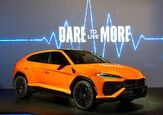
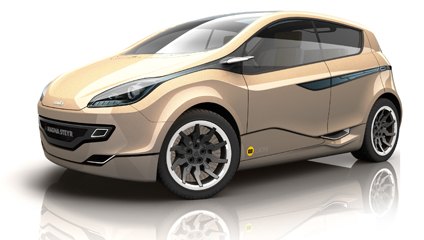












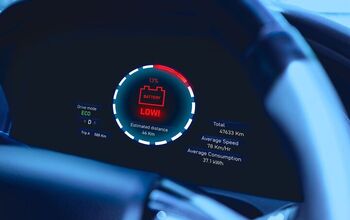










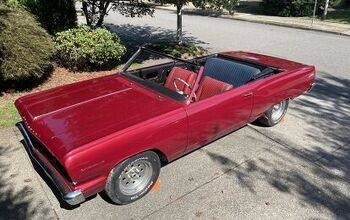
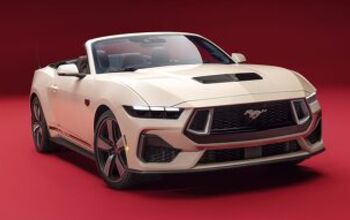
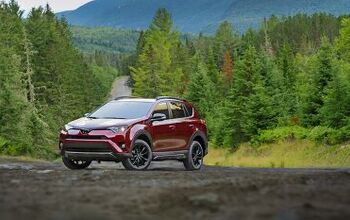
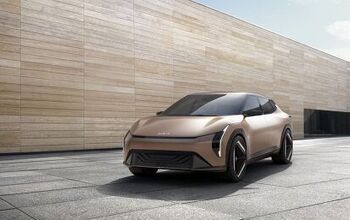
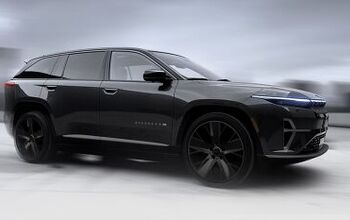

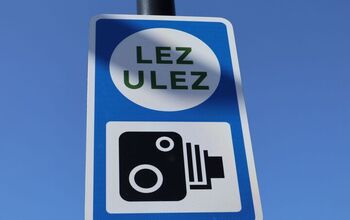
Comments
Join the conversation
This article assumes that there is a viable market for EVs that Ford is somehow missing the boat on. Last I checked, there has been no successful EV (and, no, Ed Begley and associated EV1 fans, that car wasn't successful, and if it was, it would still be in production). Based on what I see coming out soon, and unless there's some kind of wholesale seismic market shift, there probably won't be a successful EV either. Ford is betting economy-wise on eco-boost (better known as direct fuel injection), and to me, this seems more sensible. Direct injection makes a four run like a six, a six like an eight, and so on. Anyone who's driven the Cadillac CTS or the BMW 335 knows that this engine technology can do for a car, and the cost is a small fraction of that of other economy/performance enhancing technologies. Car and Driver recently tested the new Lincoln MKS and MKT vehicles equipped with the Ecoboost system, and they are impressive. The REAL payoff of direct injection techology will be in trucks and SUVs. While GM fiddles around with $55,000 hybrid Tahoes that still only get 20 mpg around town, Ford will be able to produce $40,000 SUVs that get marginally worse mileage. Which one will sell more? I like what I see from Ford in the near future.
@ Holy Donut A product has to be commerically to be successful in the market at one point or another or the business will lose cash on the venture. (assuming I understand what you're getting at) I brought up the book to point out that making an EV is so not a huge undertaking a determined shade tree mechanic with a good toolset can slap one together. At any rate, all previous EVs have been a bust for a variety of reasons that are generally either cost or battery related. Electric motors are all over the world doing all kinds of shit reliably day in day out. The motor part is simple. To give the motor mobility it needs a battery (or some other form of mobile power) which is the details that kill the EV. Not an inherent complexity in the device which is why I call it a motor and a battery. This is why Ford is wise not to piss away tons of money on it. Especially if it takes a LOOOONG time (if ever) battery power and recharge time catches up to the convenience of a gas ICE. The lack of infrastructure is nowhere near the issue unless we can come up with safe low cost ways to cram assloads of power into a battery on the fly. The achilles heel of the EV is lagging battery tech. Battery tech is proving harder that people have thought. Otherwise you just figure out how to stuff the desired kW motor into whatever car you want to make and be done with it. If an upstart like Tesla can make an EV essentially outta nowhere like they did then clearly producing an EV ain't no thang. Finding a good enough battery and quality recharge places right now is. Bringing infrastructure up to speed would be the easier part of the EV equation. Creating a long range affordable battery with low recharge times is what the EVs need right now. Until this occurs everything else is bupkiss. Right now if Ford can't fix the other 95% of their business then they should spend as little on EVs as possible. The real sucker punch to Chrysler and GM is that Ford could upstage them on EV tech as little more than a Ford side project. Besides, ask yourself this, would you rather have an Aveo with GM derived EV powertrain or a Fiesta or even a Fusion with Magna derived powertrains? Also, to wrap this up I know that I grossly simplify things but simple things are not always easy. Benching 650lbs, easy concept, hideous challenge to execute. This is most Alt fuel programs in a nutshell. Yes a hybrid is just a car with big batteries, electric motor and regen brakes. Is it an engineering hassle and marvel to get these simple things to work well in tandem? Yes indeed. Still simple concept though.